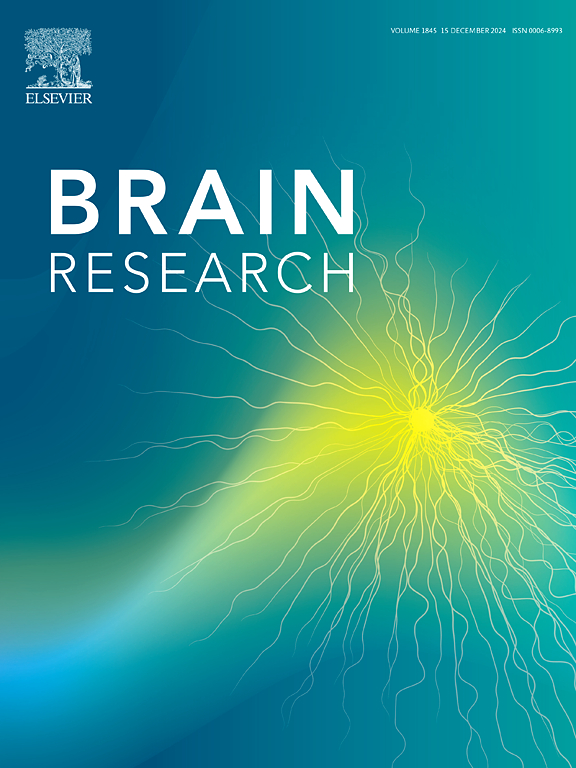高血糖是胶质母细胞瘤进展的驱动因素:来自孟德尔随机化和单细胞转录组学的见解
IF 2.7
4区 医学
Q3 NEUROSCIENCES
引用次数: 0
摘要
背景:高血糖和糖尿病可能通过改变肿瘤代谢和肿瘤微环境影响GBM的进展。然而,血糖水平与GBM之间的因果关系尚不清楚。方法使用来自UK Biobank和FinnGen数据库的GWAS数据进行孟德尔随机化(MR)分析,暴露于空腹血糖、血浆血糖、脑脊液(CSF)葡萄糖和糖尿病。对高糖和对照饮食的GBM小鼠模型进行单细胞RNA测序,以探索高血糖条件下肿瘤微环境的细胞景观。此外,对糖尿病患者脑组织的转录组数据进行基因集富集分析(GSEA),以评估gbm相关通路的活性。结果smr分析显示,空腹血糖升高与GBM风险之间存在显著的遗传关系,优势比(OR)为40.991 (95% CI: 2.066 ~ 813.447, p = 0.015)。2型糖尿病(T2D)也显示出与GBM的潜在因果关系,加权中位数和反方差加权方法的or分别为2.740 (95% CI: 1.033-7.273, p = 0.043)和2.100 (95% CI: 1.029-4.287, p = 0.042)。对GBM小鼠模型的单细胞转录组学分析显示,高糖饮食(HGD)组GBM肿瘤干细胞和致瘤前M2巨噬细胞的比例增加。糖尿病患者脑组织GSEA显示gbm相关通路活性增高,尤其是星形胶质细胞、内皮细胞和神经元。结论高血糖可能通过促进肿瘤微环境中的细胞变化和激活脑组织中GBM相关通路,积极促进GBM的进展。本文章由计算机程序翻译,如有差异,请以英文原文为准。

Hyperglycemia as driver of glioblastoma progression: Insights from Mendelian randomization and single-cell transcriptomics
Background
Hyperglycemia and diabetes may influence GBM progression by altering tumor metabolism and the tumor microenvironment. However, the causal relationship between blood glucose levels and GBM remains unclear.
Methods
Mendelian randomization (MR) analysis was performed using GWAS data from the UK Biobank and FinnGen databases, with fasting blood glucose, plasma glucose, cerebrospinal fluid (CSF) glucose, and diabetes as exposures. Single-cell RNA sequencing of GBM mouse models on high-glucose and control diets was conducted to explore the cellular landscape of the tumor microenvironment under hyperglycemic conditions. Additionally, gene set enrichment analysis (GSEA) was performed on transcriptomic data from brain tissues of diabetic patients to assess the activity of GBM-related pathways.
Results
MR analysis demonstrated a significant genetic relationship between elevated fasting blood glucose and GBM risk, with an odds ratio (OR) of 40.991 (95 % CI: 2.066–813.447, p = 0.015). Type 2 diabetes (T2D) also showed a potential causal link with GBM, with the Weighted Median and Inverse Variance Weighted methods yielding ORs of 2.740 (95 % CI: 1.033–7.273, p = 0.043) and 2.100 (95 % CI: 1.029–4.287, p = 0.042), respectively. Single-cell transcriptomic analysis of GBM mouse models revealed an increased proportion of GBM tumor stem cells and pro-tumorigenic M2 macrophages in the high-glucose diet (HGD) group. GSEA of diabetic patient brain tissue revealed heightened activity of GBM-related pathways, particularly in astrocytes, endothelial cells, and neurons.
Conclusion
These findings suggest that hyperglycemia may actively contribute to GBM progression by promoting cellular changes within the tumor microenvironment and activating GBM-related pathways in brain tissues.
求助全文
通过发布文献求助,成功后即可免费获取论文全文。
去求助
来源期刊

Brain Research
医学-神经科学
CiteScore
5.90
自引率
3.40%
发文量
268
审稿时长
47 days
期刊介绍:
An international multidisciplinary journal devoted to fundamental research in the brain sciences.
Brain Research publishes papers reporting interdisciplinary investigations of nervous system structure and function that are of general interest to the international community of neuroscientists. As is evident from the journals name, its scope is broad, ranging from cellular and molecular studies through systems neuroscience, cognition and disease. Invited reviews are also published; suggestions for and inquiries about potential reviews are welcomed.
With the appearance of the final issue of the 2011 subscription, Vol. 67/1-2 (24 June 2011), Brain Research Reviews has ceased publication as a distinct journal separate from Brain Research. Review articles accepted for Brain Research are now published in that journal.
 求助内容:
求助内容: 应助结果提醒方式:
应助结果提醒方式:


